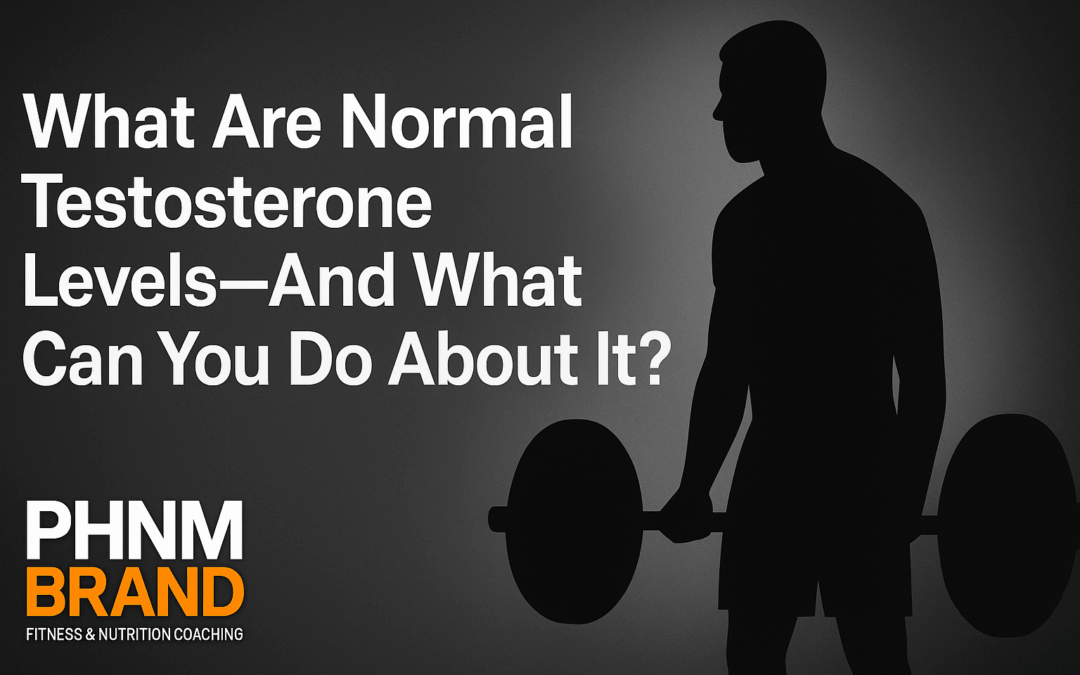What Are Normal Testosterone Levels—And What Can You Do About It?
You’re tired, your workouts feel flat, libido is a no go, and the scale keeps creeping up. Sound familiar?
For many men over 35, especially those over 50, these changes lead to one key question:
“Could it be low testosterone?”
The problem is, many men are told their levels are “normal,” even when they feel far from it. In this article, we’ll break down:
-
What testosterone actually does
-
What “normal” testosterone really means
-
And what you can do to support healthy levels—naturally or with help
What Are Normal Testosterone Levels?
Testosterone levels are typically measured in:
-
Total testosterone (ng/dL)
-
Free testosterone (pg/mL)
Most labs report normal total testosterone as anywhere between 300 to 1000 ng/dL, but that’s a huge range, and not all “normal” levels feel the same.
Most men feel best when total T is between 500–700 ng/dL
Many experience symptoms when their total testosterone drops below 400 ng/dL, even though it’s technically still “normal.”
What About Free Testosterone?
Free testosterone—the form not bound to proteins—is often a better indicator of how you actually feel.
-
Normal range: 9 to 25 pg/mL
-
Optimal range for most men: 15–25 pg/mL
-
Key Takeaway: You can have “normal” total testosterone but still feel low if your free T is suppressed.
Common Signs of Low Testosterone
If you’re noticing any of these symptoms, it might be time to get checked:
-
Low sex drive or erectile dysfunction
-
Fatigue, low motivation, or brain fog
-
Increased belly fat
-
Difficulty building or maintaining muscle
-
Mood swings or irritability
-
Poor sleep or slow recovery
Testosterone naturally declines about 1% per year after age 30, but that doesn’t mean you have to settle for feeling worse with age.
What You Can Do:
Before considering medical treatment, dial in these lifestyle fundamentals. They can make a big difference:
1. Prioritize Quality Sleep
-
Aim for 7–9 hours per night
-
Avoid screens, alcohol, and caffeine late in the day
-
Deep sleep is when testosterone production happens
2. Lift Heavy Weights
-
Focus on compound lifts (squats, deadlifts, presses)
-
Train 3–4x per week, 45–60 minute sessions
-
Resistance training beats cardio for hormone optimization
3. Lower Body Fat & Manage Stress
-
Visceral fat increases estrogen, lowers T
-
Chronic stress = high cortisol = lower testosterone
-
Eat whole foods, stay active, practice mindfulness
4. Eat to Support Hormones
-
Healthy fats: avocados, olive oil, nuts, eggs
-
Protein: 0.7g+ per lb of bodyweight
-
Cut back on ultra-processed junk, sugar, and alcohol
Smart Supplement Support
While not miracle cures, these supplements can help if you’re deficient:
| Supplement | Dose | Benefit |
|---|---|---|
| Vitamin D3 | 2000–5000 IU/day | Supports hormone function |
| Zinc | 15–30 mg/day | Supports testosterone & libido |
| Magnesium | 200–400 mg/day | Aids recovery, sleep, stress |
| Ashwagandha | 300–600 mg/day | Lowers cortisol, boosts T |
| DHEA | 25–50 mg/day (medically supervised) | Hormone precursor boost |
When to Consider TRT (Testosterone Replacement Therapy)
TRT can be life-changing for men with chronically low testosterone, but it should never be the first step. You may be a candidate if:
-
Total T is consistently under 300 ng/dL
-
You’ve optimized lifestyle and still have symptoms
-
Free testosterone is low, even if total is “normal”
-
You’ve ruled out other issues (thyroid, sleep apnea, etc.)
TRT is powerful, but it requires:
-
Medical supervision
-
Regular bloodwork
-
Long-term commitment
Final Thoughts
Testosterone is one of the most important hormones for men’s health—and knowing your numbers is only the beginning.
Start by optimizing sleep, strength training, stress, and nutrition. Add in targeted supplements. If nothing changes, it might be time to get tested and explore TRT with a qualified provider.
Your energy, confidence, and vitality are worth fighting for.

